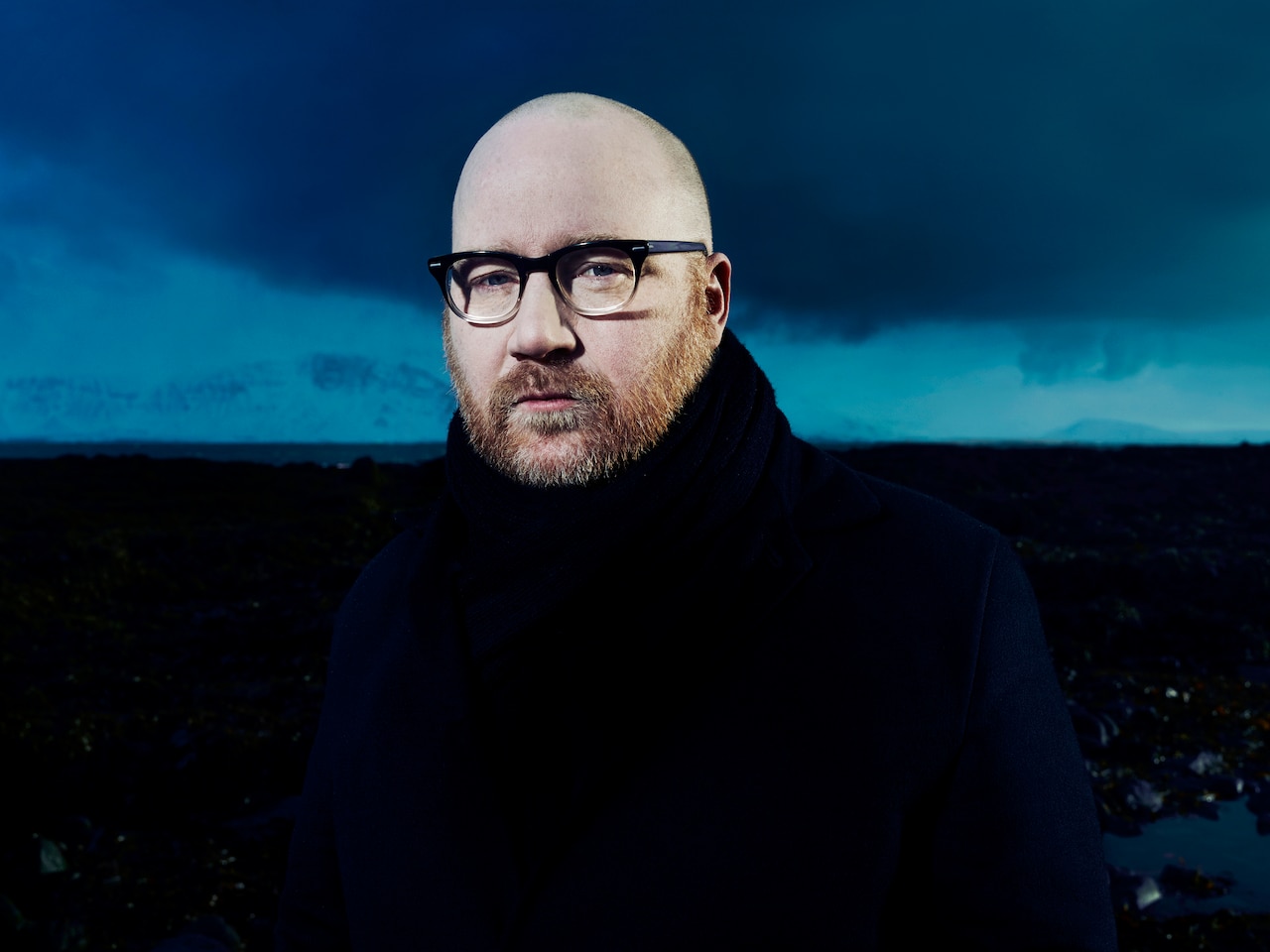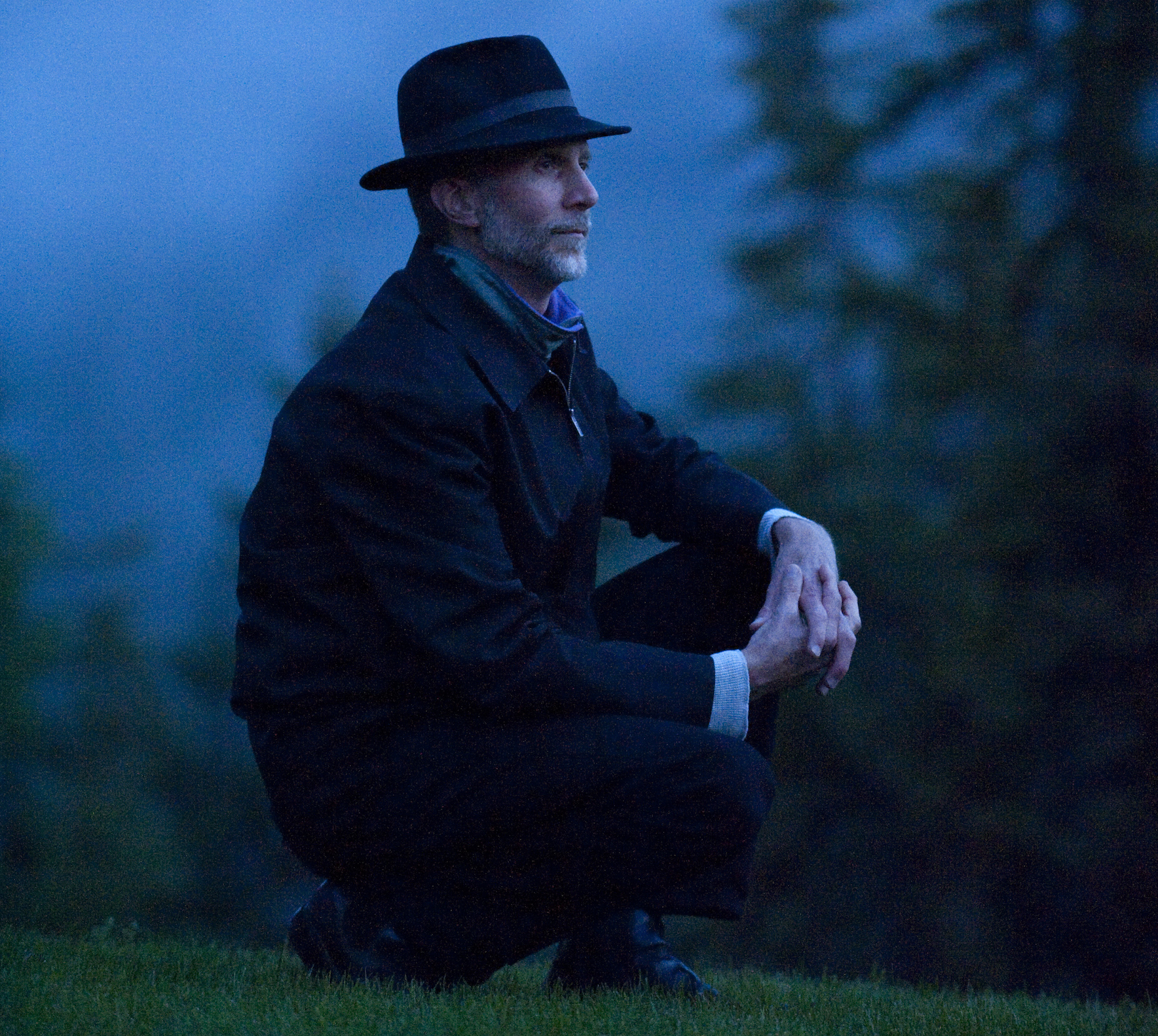Soundtrack Composer Jóhann Jóhannsson on Arrival, Sicario and The Theory of Everything
The composer takes stock of his career

Icelandic composer Jóhann Jóhannsson is a master of developing minimal ideas into huge cinematic experiences. From his celebrated theatre score turned debut album Englabörn to the retrofuturistic aesthetics of IBM 1401 — A User’s Manual and his most recent collection of minimalist ideas Orphée, he has explored the dynamics between classical instrumentation, electronics and the human voice in his solo work.
It’s a sonic language he uses to great effect in his scores and soundtracks, too, most notably alongside Canadian director Denis Villeneuve. Jóhannsson’s scores for Villeneuve’s Prisoners, Sicario and Arrival are considered masterpieces of modern, theory-laden film composing, and his expansive piano and string figures for James Marsh’s Stephen Hawking biopic The Theory of Everything earned him a Golden Globe.
Julian Brimmers caught up with Jóhannsson to take stock of his career thus far for a Fireside Chat on RBMA Radio. What follows is an excerpt of that conversation.
Your most recent album, Orphée, starts off with a piece titled “Flight from the City.” Despite the clichéd ideas one might have about Iceland, have you always been a big city person?
I grew up in Reykjavík, which is a city, but it’s a small city and it’s a city that’s very spread out, but it has a very strong center which is where I spent most of my teenage and young adult life both studying and living and working in studios and recording and playing music. It’s also a city that’s surrounded by nature.
I haven’t lived in Iceland for many years now – close to 15 years – and since then I’ve lived in quite big cities and very densely populated cities like Copenhagen and Berlin. I like to work in environments that are lively and have a lot of activity in them. I suddenly go on retreat sometimes to work where there’s fewer distractions and more peace and quiet, but I tend to get cabin fever after ten days or so. I get this longing to get back to the hustle and bustle of the city. Even though my music sometimes has a serenity and calmness to it, it’s always produced in environments that are quite frenetic and full of tension.
The area [in Berlin] where I live and work now, Kreuzberg, I’m basically in a street where there are protest marches almost weekly and demonstrations and partying 24/7. Because I’m in a back house, I don’t hear any of this noise, but they are all happening just about 100 meters away. I like this sense of dichotomy of this oasis of peace and quiet in the middle of this area of frantic activity.
How did you get started in the Reykjavik music scene?
I started my first band when I was 16 or 17, and it was a band which was very much based around distorted fuzz guitar. It was very minimalistic, very textural. I suppose we were a rock band of sorts, but I think we were much closer to something like Suicide, Spacemen 3 or The Jesus & Mary Chain. I’ve always been interested in this aspect of making music of creating sound by layering. By creating these sorts of sculptures, this sculptural approach to sound, whether it’s made of guitar fuzz and layers of distortion and amplified noise or whether it’s layers of orchestra and choir and digital manipulation or God knows what else. It’s an approach that I’ve always been very interested in.
How many instruments had you learned at that point?
I studied trombone and piano, but I quit studying academically around the age of 18. I went to university and studied literature, so that’s really my academic background, but musically I’m very much an autodidact and someone who’s taught myself what I needed to know in terms of composition, in terms of orchestration, harmony, etc. That’s been a slow process of self-education throughout the years, but I don’t really consider myself an instrumentalist or someone who has any... I don’t have any ambitions as a performer on an instrument. I’m more interested in the big picture elements. Virtuosity is of no interest to me at all.
Your second album for Touch, Virðulegu Forsetar, was centered around the idea of entropy. Seeing that you studied English literature, were entropy enthusiasts like Thomas Pynchon or William Gaddis influential for the album?
Pynchon was definitely a big influence on that. The Crying of Lot 49 and V. and those novels were things that I was reading. Not at the time, maybe more like five or six years earlier, but they were definitely part of the conception of that piece. It’s a very simple piece that didn’t take very long to write. It’s an hour-long piece for nine brass instruments, percussion, and pipe organ, and is to be played in a very reverberant space. Preferably a large church or a large reverberant hall. It’s basically a 12-bar brass fanfare that slows down over the course of one hour. The repetitions are always subtly different, as they go through this process of slowing down to a crawl.
It was something influenced by ideas of time, the flow of time, the flow of energy and the idea of entropy – the idea that disorder increases and disorder increases until it reaches the maximum amount of entropy possible.
Another key motif in your work is the intermingling of technology and classical instrumentation. Your album IBM 1401 - A User’s Manual is a perfect example. First of all, is the title a Georges Perec reference?
Yes, it’s very much Georges Perec-influenced. La Vie mode d’emploi, or Life a User’s Manual, is one of my favorite books and Georges Perec is one of my favorite authors. I was very interested in the whole Oulipo movement and Raymond Queneau and the different writers associated with that movement, with the techniques and the various constraints that they developed.
Constraints are a very important element in what I do. I regularly set myself constraints and methods and dogmas to follow, to generate ideas and structures. Oulipo is a very good source of inspiration in that sense, but Georges Perec has a very special place in my heart and Life a User’s Manual had a very strong effect on me.
What was the narrative framework that you set for yourself with that album?
IBM is very much based around recordings made by my father of sounds and music that he programmed and recorded on an IBM 1401 computer. It was the first mass-produced computer in the world. The particular computer used to make the sounds was the first computer to arrive in Iceland. My father was an engineer and a programmer who was sort of an employee of IBM at the time and they – he and his colleagues – developed a method of programming melodies on this computer by exploiting a glitch in the core memory of the computer which emitted strong electromagnetic waves. They turned the computer into a musical instrument, which it was certainly not produced for.
A lot of directors work with the same composers on numerous projects: Cliff Martinez with Steven Soderbergh and Nicolas Windig Refn, Darren Aronofsky and Clint Mansell, Sofia Coppola and Brian Reitzell and so on. You and Denis Villeneuve are currently working on your fourth film together. As a composer, how important is it to work with the same directors and recurring cast members?
I think developing a kind of trust over a period of time increases the likelihood that this kind of experimentation and this kind of process of discovery, process of research, bears fruit and produces music that has a certain boldness, a certain distinctiveness and originality which is what I’m striving for and I hope I have achieved in some cases.
I’m very lucky to have found in Denis Villeneuve a director who allows this kind of process to happen and involves me. He is someone who involves me very early on in the process of making the film and gives me access to both the script and the concept art and invites me on set. Because it’s an element that is in the minds of the filmmakers from the very beginning, it becomes a much more organic part of the film.
“The Beast” from Sicario is a good example. The piece is subtle, but essential to the mood of the film.
I was involved from the very start of Sicario. I read the script before they started filming and I visited the set. Denis and I talked a lot about mood and about atmosphere and about the kind of film he wanted to make. If you read the script of Sicario, it’s very different from the film and it was very hard to... I didn’t really write [music] very much before seeing any images. I wanted to see the images before I started writing, but I knew I had a good feeling for the palette that I wanted to use. I wanted to use percussion, I wanted to use these low strings, low woodwinds and a part of the audio spectrum which is on the lower end, which kind of evokes this subterranean element. The tunnels, the sense of something coming from underground, something like the beating heart of a beast rushing towards you.
When I received the first assembly of Sicario there was no temp music at all in the film. That’s how Denis works usually, he cuts without temp music. I immediately latched on to that helicopter scene. It’s a long scene where we see the border at the twin cities of Juarez and El Paso slowly approaching. It’s a very evocative, very strong scene visually, and I was inspired by also the sound of the helicopter, the beating, the muffled beating of the helicopter blades and this sense of slowly approaching impending... This kind of descent into the netherworld, this descent into the tunnels, this descent under the Earth and the sense of a heartbeat. Of this kind of uncontrollable wildness and ferocity and savagery, really. Which is one of the things you associate with the cartels and with the drug war and with the atrocities that this state of affairs in this region has made possible.
How many cellos and basses does it take to illustrate these atrocities?
[laughs] It’s basically eight, I think it’s eight contrabasses playing in unison, but this is also layered several times and processed through various means and distorted and put through side channel distortion and various nefarious means of creating this deeply evil orchestral bass sound. Then, the percussion was hand played originally. I think I recorded three or four percussionists for that track. Then, they’re all layered together and looped and put into Ableton and processed through distortion, through compression, through various long chains of effects that evolve over time.
When I use effects I like to automate them. They’re never static. There is always movement. There’s always movement in the processing and the processing is always organic even if it’s a digital VST effect or a chain of them. Every effect is constantly moving, constantly changing in subtle ways. There’s always the sense of movement and the sense of motion.
One aspect that connects the Sicario soundtrack to the Arrival soundtrack is the combination of drones and tape layers with the human voice. You have worked with Robert Lowe on both productions.
Robert Lowe, who’s also known as Lichens. Robert Aiki Aubrey Lowe is his full artist name. He’s someone I started working with a few years ago. He did some vocals on the Sicario soundtrack and he worked also on some solo projects of mine including End of Summer which is a film that I did in the Antarctic. I composed the soundtrack with him and Hildur Guðnadóttir.
Then, he also played quite a strong role in Arrival. For example, in one of the one of the opening scenes, another aerial scene, where we catch the first glimpse of the alien spacecraft. That music was written before it was shot. That cue was written before the scene was actually shot. I was layering these attackless pianos, just the sustain of the piano.
It’s very important that this was just the sustain of the piano. The sustained sound, not the attack and not the decay, because that has a conceptual bearing on the story and the ideas behind the film as well. This idea of the cyclical nature of time and the idea of how language can affect – or the conceit that language can affect – our perception of time.
Also, we were dealing with science fiction and aliens. As a kind of constraint, [I wanted] to use the piano, the voice and the cello, but take very crucial elements out of these sounds or layer them and process them in a way that gave them this sense of the uncanny. The goal was to create something that was otherworldly.
Which is a lot like language acquisition actually works – the sounds are familiar, but you lack the grammar. There’s no deeper understanding of the structure when starting to learn a new language.
Yes, exactly. Also, because communication and language is such a huge part of the story, I wanted to use voices and choirs, but in a way that I had not heard in cinema before.
Of course, choirs have been used in science fiction many times before. The most famous example being Ligeti in Kubrick’s 2001, so I wanted to stay away from that sound as much as possible. So whereas Ligeti uses microtonal sustained clusters of sound and these microtonal shifts and extreme vibrato and all these extended techniques, I used staccato rhythms and very sustained voices.
It was more about creating these clouds of staccato, almost Morse code-like phrases that sort of overlap polyrhythmically and arhythmically. They are, in a way, like the first stages of learning language like you were saying. It’s almost like the babbling of a new infant trying to understand – or subconsciously absorb – the basic structure of a language. Of course Arrival is about a scientist, a linguist, a very, very accomplished theorist who goes about this in a very methodical way, but she’s basically using the same method. She is teaching the aliens our language like she would teach an infant and they are doing the same thing to her. They are teaching her their language like she’s an infant. That’s kind of what I was trying to evoke with the use of voice in Arrival.
You’ve been quoted saying that a lot of mainstream film uses too much music. That it’s afraid of silence. In The Theory of Everything, there is a beautiful version of the main piano motif used for the third character in the love triangle between Stephen Hawking, his wife and their common friend. The music oftentimes occurs in the scenes directly, almost like in Dogme films.
I think that came about through a collaboration with James Marsh, the director, and Jinx Godfrey, the editor, who are – like Denis [Villeneuve] – very musically-minded. It was one of those moments in the film that was tricky to make work because it’s at this crossing of diegetic and non-diegetic music (music that’s happening in the scene and outside the scene). In a way, it works, but it was an interesting and challenging thing to do.
The Theory of Everything was a very challenging score for me. It’s a very traditional score. It’s one of the few scores I’ve done that you can put in front of an orchestra and it will sound almost exactly like the score. There are some electronic elements in there and there are some moments that are more processed, but in general it’s a very classical symphonic score, which was a very new thing for me. It’s probably the most accessible piece of music that I’ve ever written and the one that I’m most known for. Hopefully some of those people, through that conduit, discover other works that I’ve done and it will be a kind of gateway drug to the rest of my body of work.

